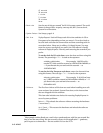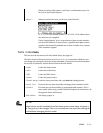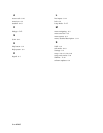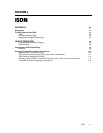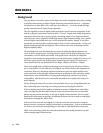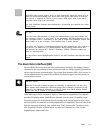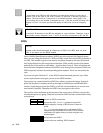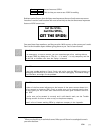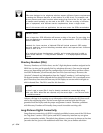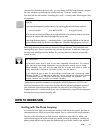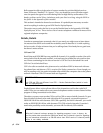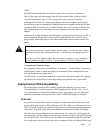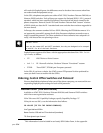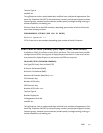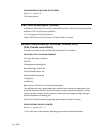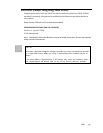
7-6 ISDN
t
DEEP TECH NOTE!
SPIDs were designed to let telephone switches support different feature requirements
by sensing the different identifier of each device on a BRI circuit. For example, mul-
tibutton phones could retain functions when moving from line to line. (In this case, the
line number would probably not be used as the SPID.) This lets a variety of different
types of equipment, with different service requirements, share a single circuit.
None of this matters with our application, but we must enter the SPIDs nevertheless.
?
CURIOSITY NOTE!
There is hope that SPID difficulties will become a thing of the past. For one thing, the
Telcos are beginning to standardize on area code + phone number + 0101 for SPIDs on
National ISDN lines.
Standards for future versions of National ISDN will include automatic SPID assign-
ment and selection, and non-initializing terminals which could operate basic functions
without a SPID at all.
WeÕre monitoring these developments carefully, and at some point may be able to
support these features Ñ if they become available ÑÊin a ZephyrExpress software
upgrade.
Directory Numbers (DNs)
Directory Numbers, or DNs for short, are the 7 digit telephone numbers assigned to the
ISDN line (or what you’d typically find in a telephone directory). You may be assigned
one or two, depending upon the line configuration. In the case where you have two ac-
tive ISDN B channels, you will usually have two DNs (but not always). However, the
“physical” channels are independent from the “logical” numbers. A call coming in on
the second number will be assigned the first physical B channel, if it is not already occu-
pied. Therefore, there must be some way for the Zephyr to sort out which call goes to
which channel/line. The DN is used for this function.
i
ISDN TIP!
You donÕt need to enter DNs if theyÕre already contained as a seven-digit string
within your SPIDs. When DNs are required, only the seven digits Ñ not the area code
ÑÊshould be entered.
When a call rings in, it contains set-up information which includes the DN that was di-
aled by the originating caller. The last seven digits are matched with the DNs pro-
grammed into the Zephyr and the proper assignment is made. Therefore, problems
with Directory Numbers will virtually always result in trouble receiving calls.
Long-Distance Digital Connectivity
Long-distance connectivity via ISDN is routinely available in most parts of the USA from
the “big-three” carriers: AT&T, Sprint, and MCI. Connectivity between any two given
points is somewhat variable. The default long-distance carrier may be chosen at the time
you order the line, just as with traditional voice lines. Also, just as endless television



